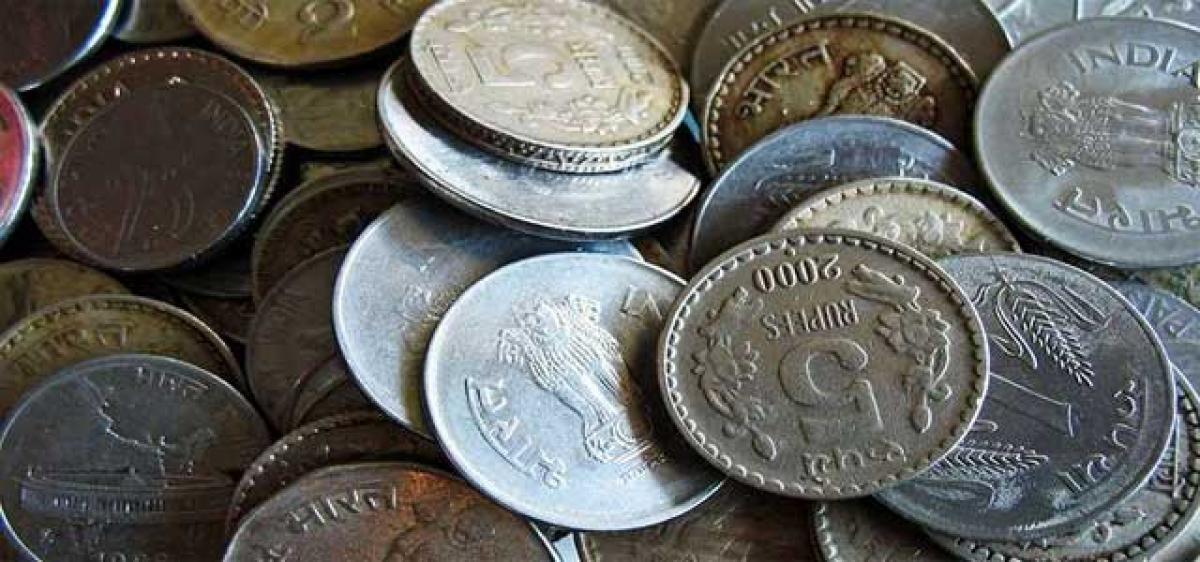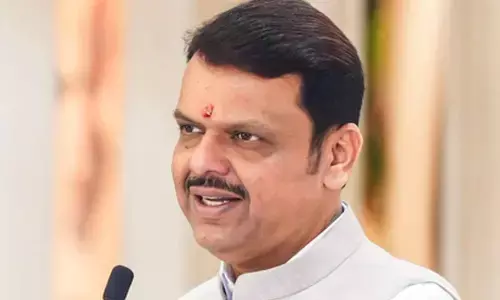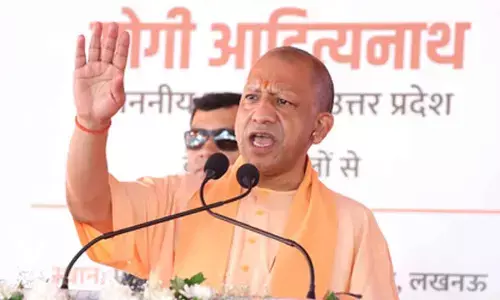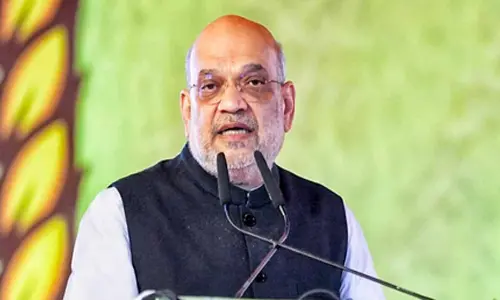Indian economy is slowing

India’s GDP growth is estimated to slow down to 7.1 per cent in current fiscal, from 7.6 per cent in 2015-16, mainly due to slump in manufacturing, mining and construction sectors.
India’s GDP growth is estimated to slow down to 7.1 per cent in current fiscal, from 7.6 per cent in 2015-16, mainly due to slump in manufacturing, mining and construction sectors.
However, the ‘First Advance Estimates of National Income, 2016-17’ did not reflect the impact of demonetization, effected on November 9 for ban of old Rs 500/1,000 notes, and are based on sectoral data for only seven months or till October.
No doubt, India’s growth momentum has slowed down as advanced GDP estimates and gross value added (GVA) for the current fiscal year from the Central Statistics Office clearly revealed the extent of the slowdown.
Also Read:
Low tax to GDP ratio in India
India’s tax-to-GDP ratio is at 16.6% is well below the emerging market economies (EME) and OECD averages of about 21% and 34% respectively. Taxation is the key to long run political and economic development...
Statistical data
- The GDP growth is now pegged at 7.1%, as compared to 7.6% in 2015-16.
- Real GDP or Gross Domestic Product (GDP) at constant (2011-12) prices in the year 2016-17 is likely to attain a level of Rs 121.55 lakh crore, as against the Provisional Estimate of GDP for the year 2015-16 of Rs 113.50 lakh crore, released May 31, 2016.
- Anticipated growth of real GVA at basic prices in 2016-17 is 7 per cent against 7.2 per cent in 2015-16.
- The CSO projections on national income are now in line with the Reserve Bank’s estimates, which too has lowered the GDP growth prospects to 7.1 per cent.
- In value terms, the Gross Value Added (GVA) at constant prices is anticipated to increase from Rs 104.27 lakh crore in 2015-16 to Rs 111.53 lakh crore in 2016-17. As per the data, performance of the all sectors, excluding ‘agriculture’ and ‘public administration, defence and other services’.
- ‘Agriculture, forestry and fishing’ is expected to expand by 4.1 per cent in 2016-17 from 1.2 per cent. On the other hand, mining and quarrying is likely to shrink by 1.8 per cent after recording a growth a 7.4 per cent in 2015-16.
- Growth in manufacturing is expected to slow to 7.4 per cent (from 9.3 per cent) and construction activities to 2.9 per cent (from 3.9 per cent).
- As per the data, the per capita net national income (current prices) during 2016-17 is estimated to be Rs 1,03,007 showing a rise of 10.4 per cent as compared to Rs 93,293 during 2015-16 with the growth rate of 7.4 percent.
| SYLLABUS General Studies III
|
Key areas of economy:
- Mining and quarrying is estimated to shrink 1.8% in 2016-17 after expanding 7.4% last year.
- Utility services like electricity, gas, water supply and others — collectively an indicator of broader economic activity — is slowing to 6.5% from 6.6%.
- Manufacturing and services, the two key engines of economy, are losing momentum, faster than anticipated.
- The growth projections for services such as financial, insurance and real estate is at 9% compared to last year’s 10.3%. Other services such as trade and telecommunication will grow 6% as against 9% last year.
- Manufacturing will grow 7.4% versus 9.3% previous fiscal.
- Construction – the biggest creator of jobs – will grow at 2.9% against 3.9% last year.
- It is the lowest growth forecast in three years.
- However, there is some hope as the data predicts that ‘normal monsoon’ shall expand ‘agriculture, forestry and fishing’ sector at 4.1% this fiscal compared with the previous period’s 1.2%.
- FM had projected in April that growth could accelerate this year to 8-8.5% subject to normal monsoon. It stemmed from the reversal in downturn trend wherein
- Excise duties jumped 46% as against the target of 12%
- Corporation tax was up by 21% as against budgeted 9%.
- Service tax was high by 27% against the conservative target of 10%.
- The projections have been made based on data from April to October only and don’t take into account the post-demonetisation impact.
Why till October?
- The policy of demonetisation brought lot of volatility in the figures in that time period, especially in sectors of financial, insurance, real estate and professional services.
- Hence, it was better to not factor in the post demonetisation growth period which saw mostly predictions and not actual ground level data.
- For example, there has been growth in VAT collections in November 2016 in many states. Counting in on such extreme data may not provide a true picture.
- Also, the budget is going to be presented earlier; hence, there was a need to bring in early the GDP growth data forecast.
Reasons for slowdown
- The slump is mainly due to slowdown in manufacturing, mining and construction sectors where the manufacturing sector has been under-performing for nearly two years now.
- There has been sluggish environment of investments, especially private investments.
- Shortfall in revenue from disinvestments as only Rs. 23,529 crore were raised against expectation of Rs. 56500 crore.
- The farm output was low due to past two drought years.
- Higher subsidy expenditure on food, petroleum and fertiliser, right from the beginning of fiscal year.
- Additionally, the global economy is also facing a slowdown and India is not insulated from its effects.
Forecast spectrum
- Preliminary rabi data show that the total area sown under the rabi crop as on January 6 stood at 602.75 lakh ha, up 6.5% from last year. If farmers can pass over the acute cash shortage and ensure that the sowing translates to strong growth in output, the increase in rural consumption can provide some moderation from the slowdown.
- Also, the rise in indirect taxes might provide cushioning effect to absorb the shock to the economy due the disruption caused by demonetisation.
- The overall growth rate of over 7% is predicated on enhanced public expenditure (12.8%, against 6.6% in 2015-16), manifested in pay panel payouts.
- However, most private economists have pared India’s growth forecast to 6.3-6.4% for the 2016-17 fiscal year, citing the impact of the government’s demonetisation move, which they reckon would linger for one more year.
- As a worst-case scenario, India could be back to the 6% growth levels of 2014-15 this fiscal, with the effects of the downturn dragging into 2017-18.
- This could happen in the event of weak consumer and investor sentiment dragging each other down with the consumer holding on to cash (precautionary demand for money).
- Therefore, the economy may not bounce back to normal even after bank has sufficient currency and the RBI lowers the repo rate. Instead, the banks should finally be willing to lend rather than park funds in G-Secs. On the demand side, job uncertainties could dampen demand for credit even if rates fall.
- The Centre must prepare for a spending push in the Budget, both in physical and social infrastructure, to redress the demand compression.
The GDP estimate is a vital input for finance minister’s budget on February 1. Until last year, the government’s statisticians would wait for GDP data for the quarter through December before putting out full-year estimates.
But the announcement of the GDP estimates had to be made early keeping in mind the advanced budget in 2017.
The CSO will revise numbers when the second estimate is released in end February. However, momentum is expected to stabilize into FY17-18 to 7.6%, on easing cash shortage, lower borrowing costs, constrained demand and higher public capex spending.
The government is expecting a revival in consumption demand in the last three months of the year once there’s more cash available with households, and also on the manufacturing sector regaining some of the lost momentum.














